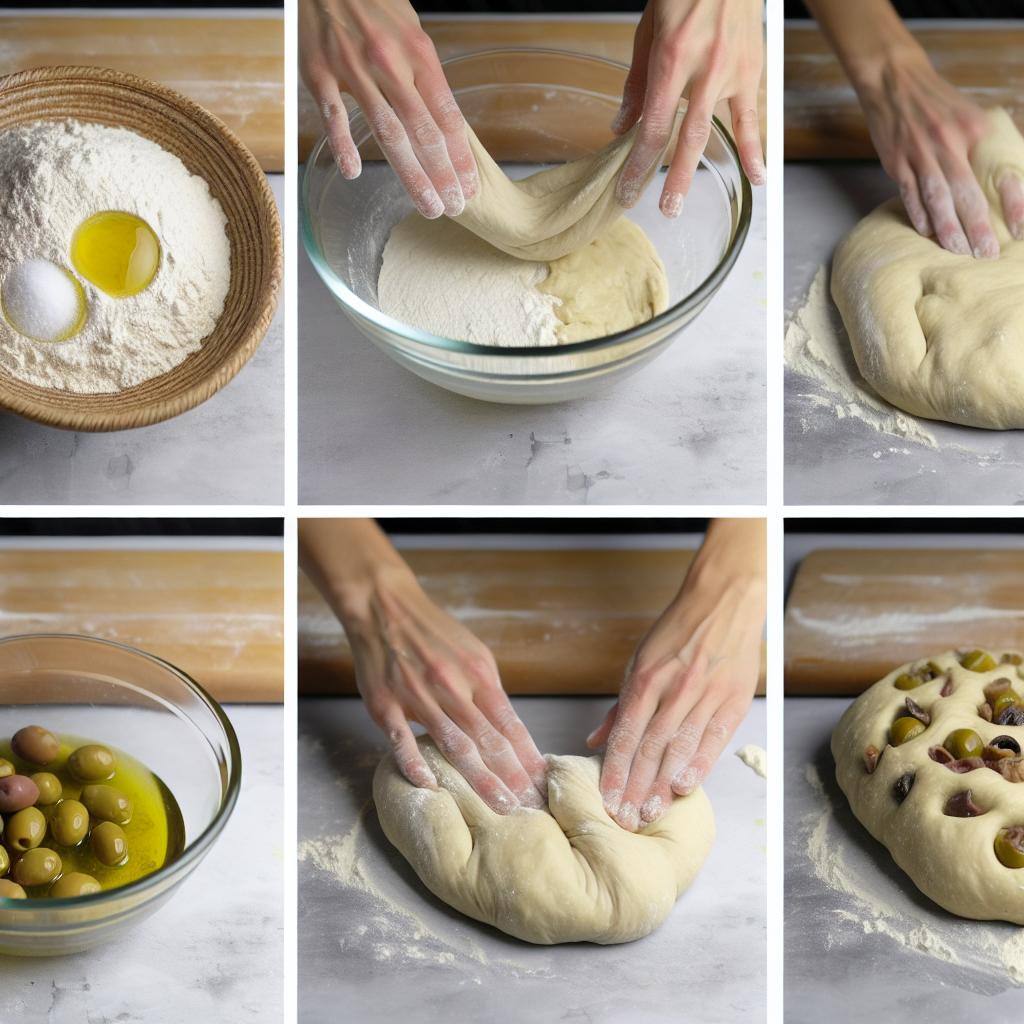Discover the art of crafting the perfect olive and onion focaccia dough that will elevate your...
Mastering the Stretch and Fold for Olive Ciabatta Dough
Unlock the secrets to perfecting your olive ciabatta with the stretch and fold technique, a simple yet transformative method that enhances texture and flavor.
Click on the audio link above for instant listening gratification!

The Importance of the Stretch and Fold Technique in Bread Making
The stretch and fold technique is essential in bread making, particularly for high-hydration doughs like ciabatta. This method helps to develop gluten without the need for vigorous kneading, which can be especially beneficial for delicate doughs that contain inclusions like olives.
By gently stretching and folding the dough, you introduce air into the mixture, which contributes to a more open crumb structure. This technique also helps to evenly distribute the olives throughout the dough, ensuring a consistent taste in every bite. Ultimately, mastering this technique can significantly improve the texture and flavor of your olive ciabatta.
Step-by-Step Guide to Stretching and Folding Olive Ciabatta Dough
Step 1: Begin by lightly flouring your work surface and your hands to prevent sticking. Place the dough on the surface and gently stretch it into a rectangle.
Step 2: Fold one short side of the rectangle towards the center, then fold the opposite short side over the first fold, like folding a letter.
Step 3: Rotate the dough 90 degrees and repeat the folding process with the other two short sides.
Step 4: Let the dough rest for 30 minutes, covered with a damp cloth or plastic wrap to prevent drying out. Repeat this stretching and folding process 3-4 times over the course of 2 hours.
Step 5: After the final fold, allow the dough to rest and rise until it has doubled in size, which typically takes about 1-2 hours depending on the ambient temperature.
How Stretch and Fold Affects the Texture of Olive Ciabatta
The stretch and fold technique plays a crucial role in developing the unique texture of ciabatta. By incorporating folds, you create layers within the dough that trap air, leading to a light and airy crumb.
This method also helps to evenly distribute the olives and other inclusions, which can otherwise cause dense pockets if not properly mixed. The gentle handling ensures that the dough remains supple and extensible, contributing to the characteristic chewy crust and tender interior of ciabatta bread.
Common Mistakes to Avoid When Handling Olive Ciabatta Dough
One common mistake is overworking the dough. Ciabatta dough is highly hydrated and can become difficult to manage if handled too roughly. Remember, the goal is to gently stretch and fold, not knead.
Another mistake is not allowing sufficient rest time between folds. The dough needs these intervals to relax and develop gluten properly. Skipping or shortening these rest periods can result in a less structured bread.
Lastly, be mindful of the dough's hydration level. Too much flour can make the dough stiff and difficult to stretch, while too little can make it overly sticky and unmanageable.
Tips and Tricks for Perfecting Olive Ciabatta with Stretch and Fold
Always use a light touch when handling the dough to avoid deflating the air pockets that contribute to ciabatta's airy texture.
Maintain a slightly damp work surface and hands to prevent the dough from sticking without adding extra flour, which can alter the hydration balance.
Consider incorporating a few minutes of autolyse—a resting period where the flour and water are mixed and left to sit—before adding the olives and salt. This can help to develop gluten more effectively.
Finally, practice patience. Mastery of the stretch and fold technique comes with time and experience, so don't be discouraged if your first few attempts aren't perfect.
Join our mailing list by filling in the form below to get the latest news, recipes and product updates!
